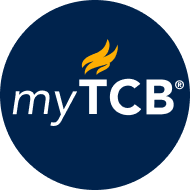


Members of The Conference Board get exclusive access to the full range of products and services that deliver Trusted Insights for What's Ahead ® including webcasts, publications, data and analysis, plus discounts to conferences and events.
19 May 2022 / Report
This report provides insights relating to board composition (including gender, race, and sexual orientation diversity, director qualifications and skills), size, and education at S&P 500 and Russell 3000 companies. Our findings are based on data derived from our live, interactive online dashboard powered by ESGAUGE,[1] as well as a Chatham House Rule discussion with leading governance professionals held in April 2022.
This report provides insights relating to board composition (including gender, race, and sexual orientation diversity, director qualifications and skills), size, and education at S&P 500 and Russell 3000 companies. Our findings are based on data derived from our live, interactive online dashboard powered by ESGAUGE,[1] as well as a Chatham House Rule discussion with leading governance professionals held in April 2022.
Former Senior Researcher, Governance & Sustainabil…
The Conference Board

myTCB® Members get exclusive access to webcasts, publications, data and analysis, plus discounts to events.
You already have an account with The Conference Board.
Please try to login in with your email or click here if you have forgotten your password.

